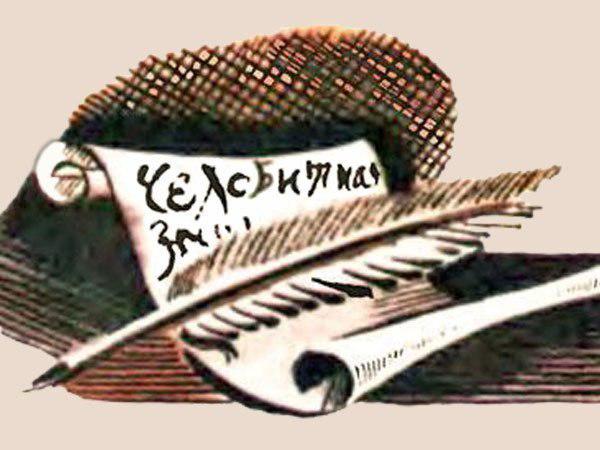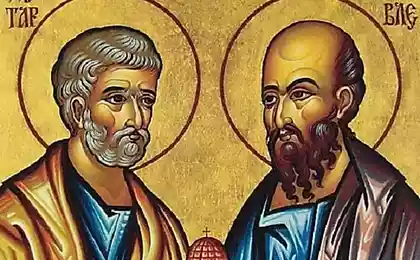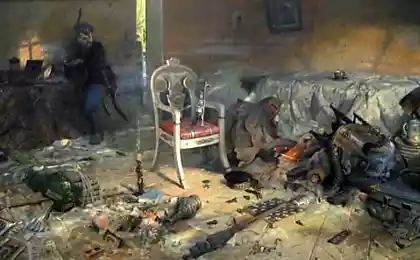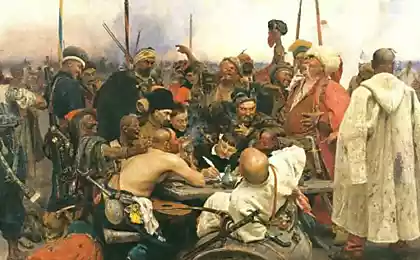657
7 high-profile reforms of Peter I
August 18, 1682 on the Russian throne 10-year-old Peter I. This ruler we remember as a great reformer. Negatively or positively relate to its innovations - you decide. 7 remember the most ambitious reforms of Peter I.

Church - not the state
"The Church is not a State," - says Peter I, and because of his ecclesiastical reform was aimed at weakening the political power of the church. Before her a church court could judge the clergy (even in criminal cases), and the timid attempts predecessors Peter I change it met tough resistance. On a par with other classes clergy after the reform was to obey the law common to all. In the monasteries were to live only monks in the hospice - only patients, all others were ordered to evict from there.
Peter I known tolerance of other faiths. When it was allowed to freely practice their religion and foreign marriages of Christians of different denominations. "The Lord gave the kings power over the nations, but the conscience of people the power to Christ alone" - says Peter. With opponents of the Church he ordained bishops to be "gentle and reasonable." On the other hand, Peter introduced penalties for those who confessed at least once a year or badly behaved in church during the service.

Tax bath and beard
Large-scale redevelopment projects for the Army, Navy construction required enormous monetary investments. In order to ensure that they, Peter I tightened the tax system. Now taxes are not collected by the yard (because farmers immediately began to enclose a fence a few yards), and heart to heart. There were up to 30 different taxes: fishing for baths, mills, on the practice of the Old Believers and beards, and even oak deck for coffins. Beard was told to "chop to the neck", and for those who wore them for a fee, introduced a special counter-receipt, "the bearded sign." Salt, alcohol, tar, chalk, fish oil could now trade only state. Basic monetary unit under Peter was not the money, and penny weight and composition of coins was changed and unchangeable ruble ceased to exist. Budget revenues have increased by several times, however, due to the impoverishment of the people and not for long.

In the army for life
To win the Northern War of 1700-1721., It was necessary to modernize the army. In 1705 each household had to give a lifetime of service recruits. This applies to all classes, except the nobility. Of these recruits was compiled army and navy. In the army regulations of Peter I the first time in the first place was not delivered to the moral and religious content of criminal acts, and contrary to the will of the state. Peter managed to create a powerful regular army and navy, which until now was not in Russia. By the end of his reign in the number of regular Army was 210,000, irregular - 110 thousand, and more than 30 thousand people served in the Navy.

The "extra" 5508 years
Peter I «canceled" 5508 years, changing the tradition of chronology: instead of counting years "from Adam" in Russia began to count the years of "the birth of Christ." The use of the Julian calendar and celebrate the New Year January 1 - Peter also innovations. He also introduced the use of modern Arabic numerals, replacing their old figures - the letters of the Slavic alphabet with Titley. Lettering simplified, the letter "chi" and "psi" "dropped" from the alphabet. For secular books now relied own font - civil and liturgical and spiritual was left semi-uncial.
In 1703, the beginning of the output of the first Russian printed newspaper "Vedomosti", and in 1719 - the first act in the history of the Russian Museum - Cabinet of Curiosities from the public library.
When Peter opened School of Mathematics and Navigation Sciences (1701), Medical-surgical School (1707) - Future of the Military Medical Academy, Naval Academy (1715), Engineering and Artillery School (1719), School of Translators with colleagues.

Learning is through the power of
All the nobles and clergy now had to get an education. The success of the noble career depended on it directly now. When Peter created new schools: Garrison - for children of soldiers, spiritual - for children of priests. Moreover, in each province were to be tsifirnye school with free tuition for all classes. These schools are necessarily supplied primer on the Slavonic and Latin, as well as the alphabet, harps, Book of Hours, and arithmetic. Education clergy were forced, threatened to resist him military service and taxes, and those who have not graduated from the training, it was impossible to marry. But because of the coercive and harsh training methods (beating Batog and Planting on the chain) such schools did not last long.

Rab better slave
"Less than meanness, more zeal for the service and loyalty to me and to the state - And this is peculiar to honor the king ..." - these are the words of Peter I. As a result of the royal position have been some changes in relations between the king and the people, who were a novelty in Russia. For example, in the petitions letters were not allowed to humiliate themselves more signatures "Grisha" or "Mitya," and it was necessary to put your full name. Was not necessarily remove the cap on the strong Russian frost, passing by the royal residence. Was not supposed to fall on his knees before the king, and the treatment is "slave" is replaced by "slave", which was at that time not pejoratively and was associated with "a servant of God».
Added freedom and young people who want to marry. Refoulement girls married was canceled three decrees, and the betrothal and wedding now had to be divided in time to the bride and groom "could recognize each other." Complaints to the fact that one of them annulled the engagement were not taken - because now it was their right.

A new sense of territory
Under Peter I developed rapidly expanding industry and trade. There was all-Russian market, and thus increased the economic potential of the central government. The greatest country in the world has made Russian reunion with Ukraine and the development of Siberia. New towns, as were laid channels and new strategic road, was active exploration of ore resources, built iron foundries and arms factories in the Urals and Central Russia.
Peter I spent a regional reform 1708-1710 gg., The country is divided into 8 provinces headed by governors and governors-general. Later there was a division into provinces, the provinces into counties.

Source:

Church - not the state
"The Church is not a State," - says Peter I, and because of his ecclesiastical reform was aimed at weakening the political power of the church. Before her a church court could judge the clergy (even in criminal cases), and the timid attempts predecessors Peter I change it met tough resistance. On a par with other classes clergy after the reform was to obey the law common to all. In the monasteries were to live only monks in the hospice - only patients, all others were ordered to evict from there.
Peter I known tolerance of other faiths. When it was allowed to freely practice their religion and foreign marriages of Christians of different denominations. "The Lord gave the kings power over the nations, but the conscience of people the power to Christ alone" - says Peter. With opponents of the Church he ordained bishops to be "gentle and reasonable." On the other hand, Peter introduced penalties for those who confessed at least once a year or badly behaved in church during the service.

Tax bath and beard
Large-scale redevelopment projects for the Army, Navy construction required enormous monetary investments. In order to ensure that they, Peter I tightened the tax system. Now taxes are not collected by the yard (because farmers immediately began to enclose a fence a few yards), and heart to heart. There were up to 30 different taxes: fishing for baths, mills, on the practice of the Old Believers and beards, and even oak deck for coffins. Beard was told to "chop to the neck", and for those who wore them for a fee, introduced a special counter-receipt, "the bearded sign." Salt, alcohol, tar, chalk, fish oil could now trade only state. Basic monetary unit under Peter was not the money, and penny weight and composition of coins was changed and unchangeable ruble ceased to exist. Budget revenues have increased by several times, however, due to the impoverishment of the people and not for long.

In the army for life
To win the Northern War of 1700-1721., It was necessary to modernize the army. In 1705 each household had to give a lifetime of service recruits. This applies to all classes, except the nobility. Of these recruits was compiled army and navy. In the army regulations of Peter I the first time in the first place was not delivered to the moral and religious content of criminal acts, and contrary to the will of the state. Peter managed to create a powerful regular army and navy, which until now was not in Russia. By the end of his reign in the number of regular Army was 210,000, irregular - 110 thousand, and more than 30 thousand people served in the Navy.

The "extra" 5508 years
Peter I «canceled" 5508 years, changing the tradition of chronology: instead of counting years "from Adam" in Russia began to count the years of "the birth of Christ." The use of the Julian calendar and celebrate the New Year January 1 - Peter also innovations. He also introduced the use of modern Arabic numerals, replacing their old figures - the letters of the Slavic alphabet with Titley. Lettering simplified, the letter "chi" and "psi" "dropped" from the alphabet. For secular books now relied own font - civil and liturgical and spiritual was left semi-uncial.
In 1703, the beginning of the output of the first Russian printed newspaper "Vedomosti", and in 1719 - the first act in the history of the Russian Museum - Cabinet of Curiosities from the public library.
When Peter opened School of Mathematics and Navigation Sciences (1701), Medical-surgical School (1707) - Future of the Military Medical Academy, Naval Academy (1715), Engineering and Artillery School (1719), School of Translators with colleagues.

Learning is through the power of
All the nobles and clergy now had to get an education. The success of the noble career depended on it directly now. When Peter created new schools: Garrison - for children of soldiers, spiritual - for children of priests. Moreover, in each province were to be tsifirnye school with free tuition for all classes. These schools are necessarily supplied primer on the Slavonic and Latin, as well as the alphabet, harps, Book of Hours, and arithmetic. Education clergy were forced, threatened to resist him military service and taxes, and those who have not graduated from the training, it was impossible to marry. But because of the coercive and harsh training methods (beating Batog and Planting on the chain) such schools did not last long.

Rab better slave
"Less than meanness, more zeal for the service and loyalty to me and to the state - And this is peculiar to honor the king ..." - these are the words of Peter I. As a result of the royal position have been some changes in relations between the king and the people, who were a novelty in Russia. For example, in the petitions letters were not allowed to humiliate themselves more signatures "Grisha" or "Mitya," and it was necessary to put your full name. Was not necessarily remove the cap on the strong Russian frost, passing by the royal residence. Was not supposed to fall on his knees before the king, and the treatment is "slave" is replaced by "slave", which was at that time not pejoratively and was associated with "a servant of God».
Added freedom and young people who want to marry. Refoulement girls married was canceled three decrees, and the betrothal and wedding now had to be divided in time to the bride and groom "could recognize each other." Complaints to the fact that one of them annulled the engagement were not taken - because now it was their right.

A new sense of territory
Under Peter I developed rapidly expanding industry and trade. There was all-Russian market, and thus increased the economic potential of the central government. The greatest country in the world has made Russian reunion with Ukraine and the development of Siberia. New towns, as were laid channels and new strategic road, was active exploration of ore resources, built iron foundries and arms factories in the Urals and Central Russia.
Peter I spent a regional reform 1708-1710 gg., The country is divided into 8 provinces headed by governors and governors-general. Later there was a division into provinces, the provinces into counties.

Source:























